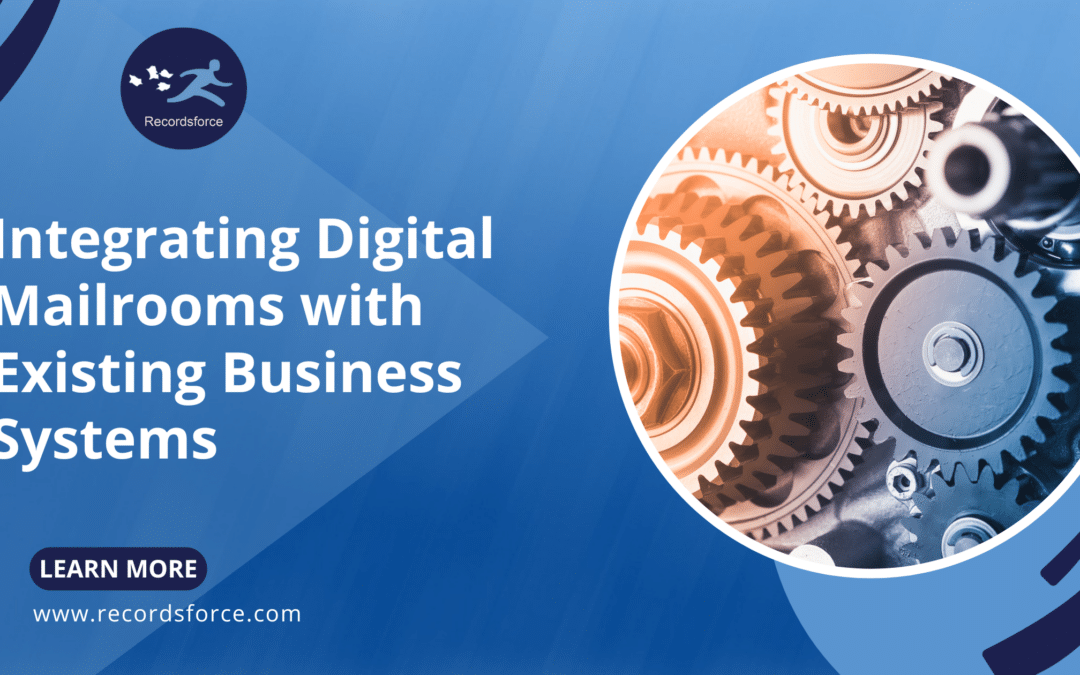Digital mailrooms, which convert physical mail into digital formats, offer organizations a powerful tool to streamline incoming document workflows. However, integrating a digital mailroom into your existing business systems can feel daunting without a clear plan. This blog will explore the benefits of a digital mailroom and offer practical tips for seamless integration with your current workflows and software.
Why Integrate a Digital Mailroom?
A digital mailroom isn’t just about eliminating paper. It enables:
- Faster Processing: Automating the digitization process ensures documents are processed quickly and efficiently.
- Improved Access: Digital files can be easily retrieved and shared across teams.
- Enhanced Security: Digital records can be stored securely, reducing the risk of lost or stolen information.
- Cost Savings: Reduced storage needs and minimized manual labor translate into significant cost savings.
When integrated correctly, a digital mailroom amplifies these benefits by aligning seamlessly with your existing systems and workflows.
Tips for Seamless Integration
1. Analyze Current Workflows
Before introducing a digital mailroom, audit your current processes. Identify:
- Bottlenecks in document processing.
- Redundant manual tasks.
- Existing software solutions and their compatibility with new systems.
Understanding your current state will help you pinpoint how the digital mailroom can enhance efficiency without disrupting workflows.
2. Choose the Right Digital Mailroom Solution
Not all digital mailroom systems are created equal. Look for solutions that:
- Support integrations with your current software, such as ERP, CRM, or document management systems.
- Offer customizable workflows to fit your specific business needs.
- Provide robust data capture and indexing capabilities to simplify searching and categorization.
3. Prioritize Compatibility with Existing Software
Your digital mailroom should integrate smoothly with tools like:
- Document Management Systems (DMS): Ensure scanned documents are automatically stored in your existing DMS.
- Enterprise Resource Planning (ERP) Software: Link digitized invoices or purchase orders directly into your ERP.
- Customer Relationship Management (CRM) Platforms: Automate importing customer correspondence for a seamless customer service experience.
Consider API compatibility or middleware to bridge gaps between systems.
4. Automate Key Processes
Leverage automation to reduce manual intervention:
- Set up automatic routing of documents based on type, sender, or department.
- Use optical character recognition (OCR) for accurate data extraction from scanned documents.
- Implement workflow triggers to notify relevant stakeholders or initiate follow-up actions.
5. Train Your Team
Even the best technology can fall flat without proper user adoption. Provide:
- Hands-on training for employees who will interact with the digital mailroom system.
- Documentation and quick-reference guides for troubleshooting.
- Regular feedback sessions to identify user pain points and address them promptly.
6. Monitor and Optimize
Post-integration, monitor system performance and user feedback. Evaluate:
- The time saved in document processing.
- Reduction in errors and misrouted documents.
- User satisfaction and system reliability.
Use these insights to make iterative improvements and maximize ROI.
Overcoming Common Challenges
Data Security Concerns
Digital mailrooms handle sensitive information, so prioritize security features like encryption, access controls, and compliance with regulations like GDPR or HIPAA.
Resistance to Change
Engage stakeholders early and communicate the value of the digital mailroom. Emphasize how it will simplify their tasks and improve efficiency.
Technical Barriers
Partner with a vendor that offers strong technical support to help address compatibility issues and guide you through the integration process.
Conclusion
Integrating a digital mailroom with your existing business systems can transform the way your organization handles incoming documents, improving efficiency, reducing costs, and boosting security. By analyzing your workflows, choosing the right solution, and focusing on seamless software compatibility, you can ensure a smooth transition that enhances your operations.
Ready to integrate a digital mailroom? Take the first step today and embrace the future of document management!

